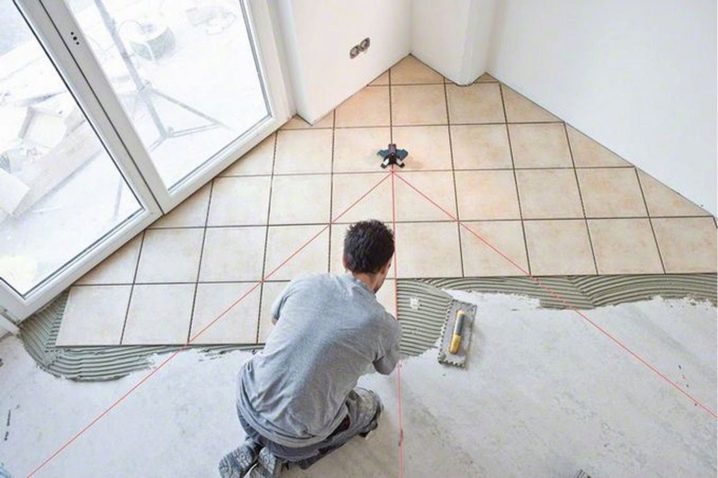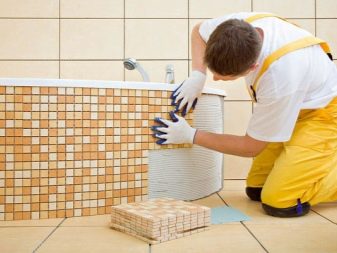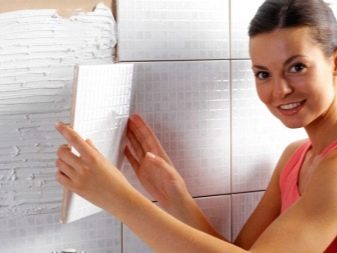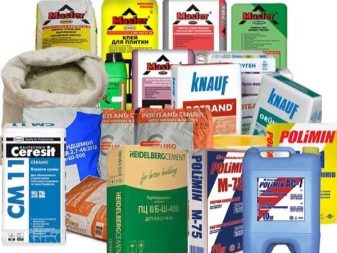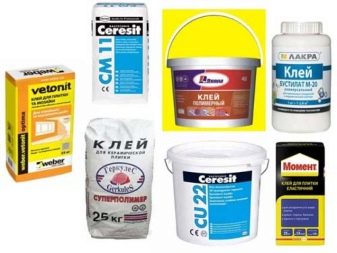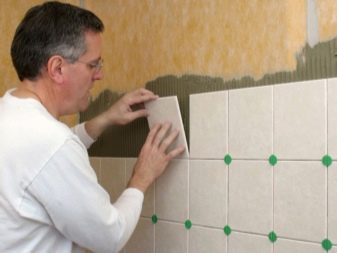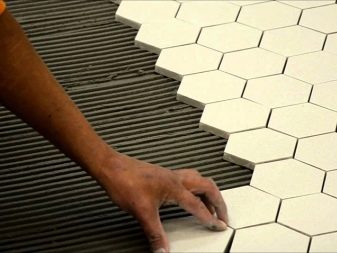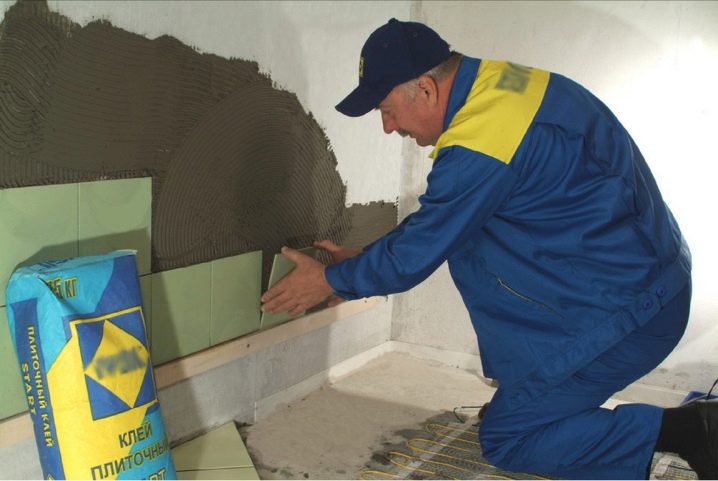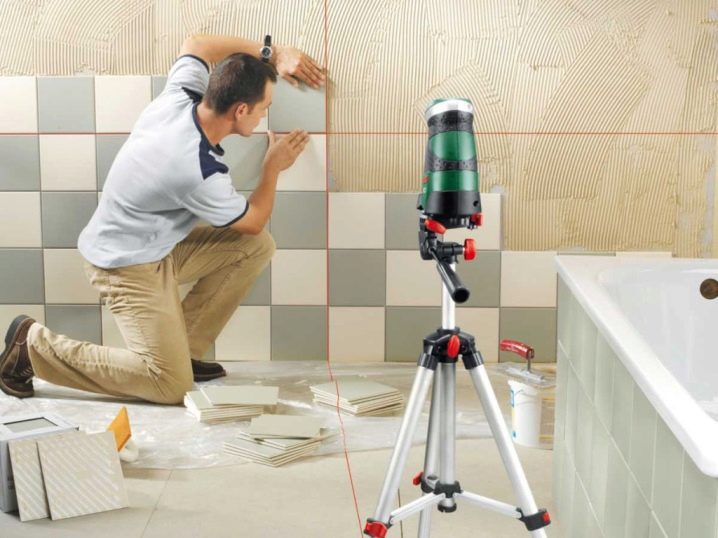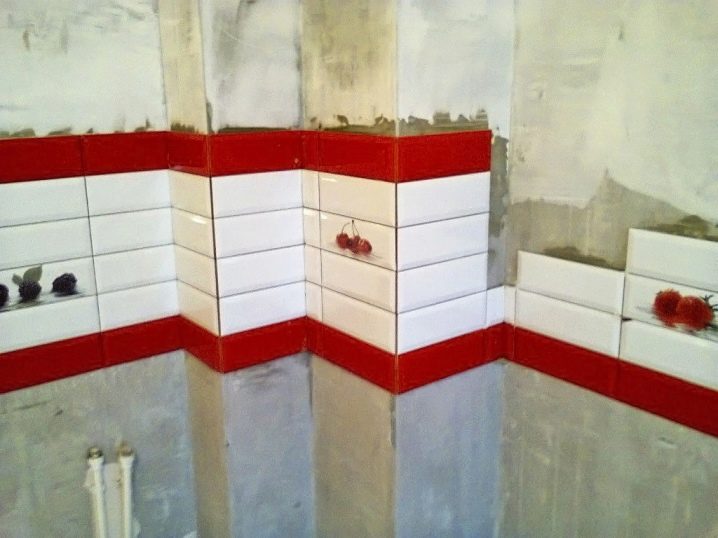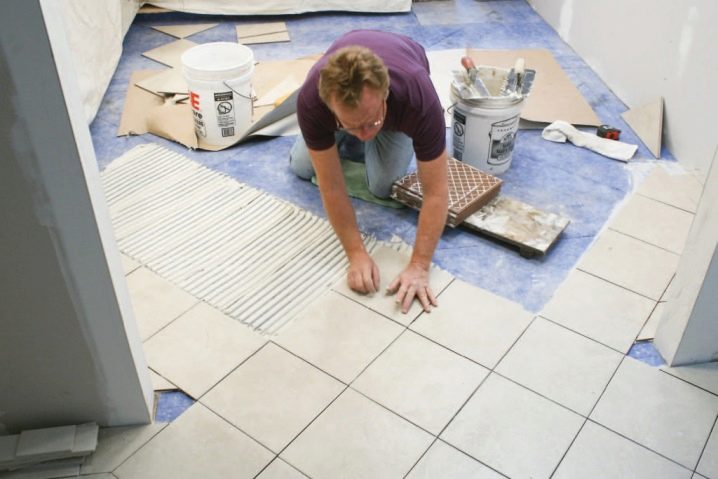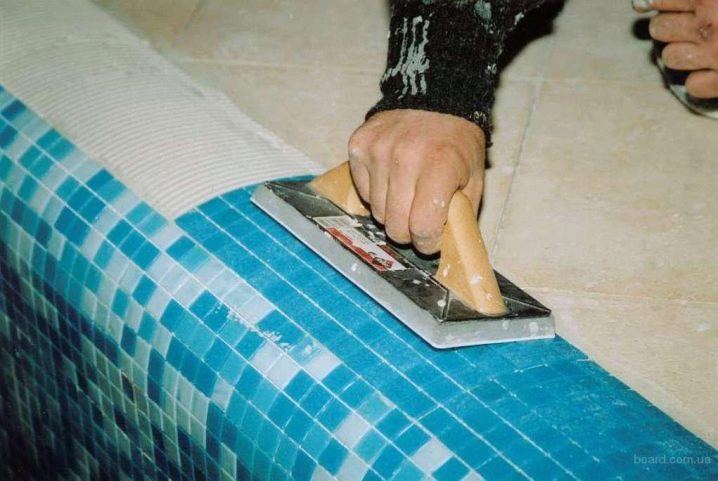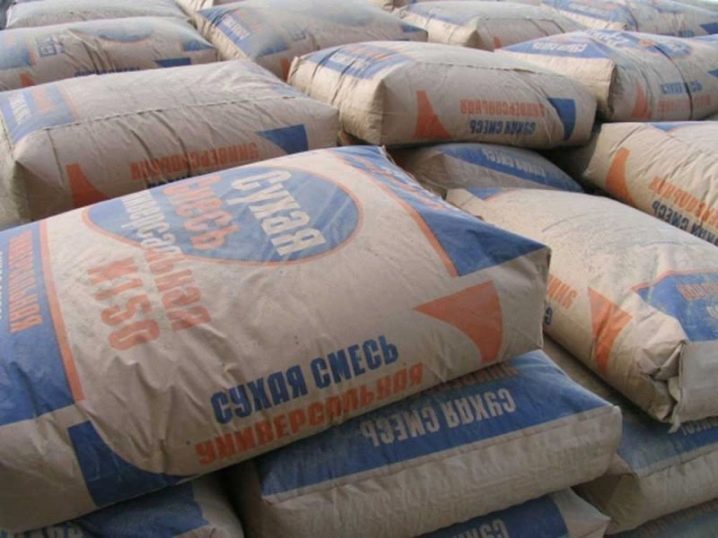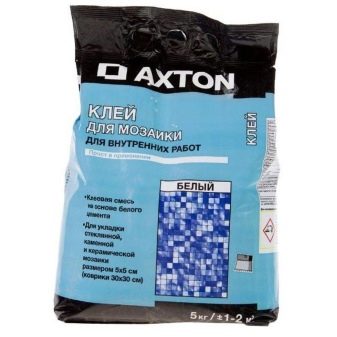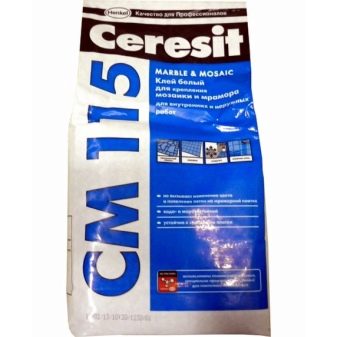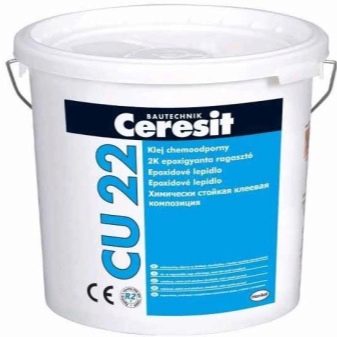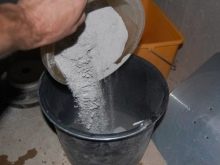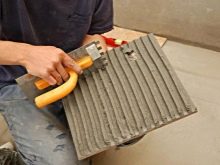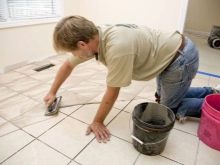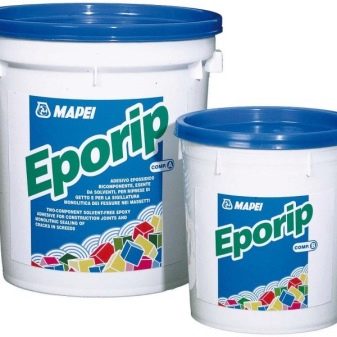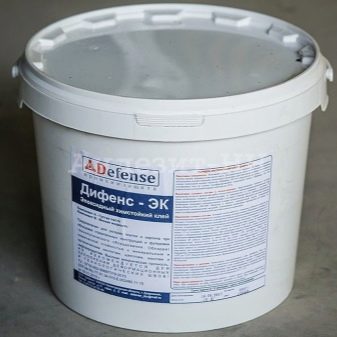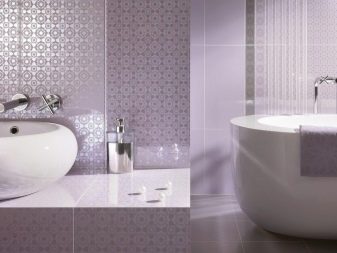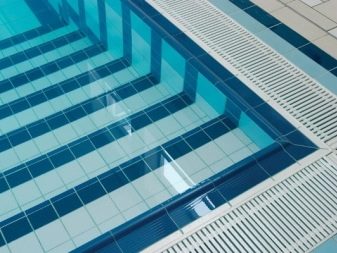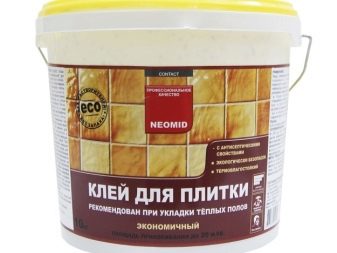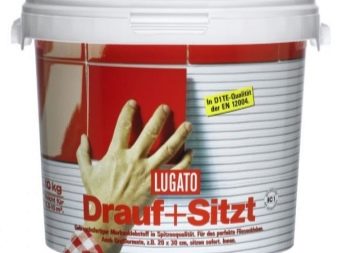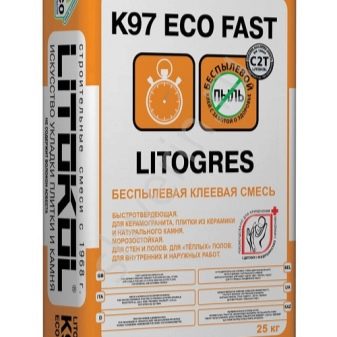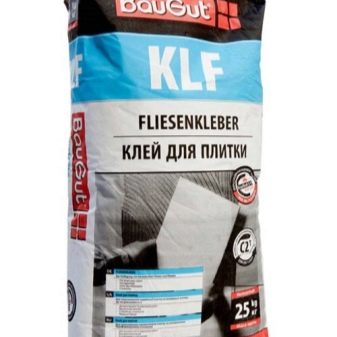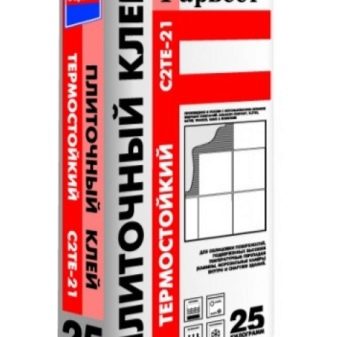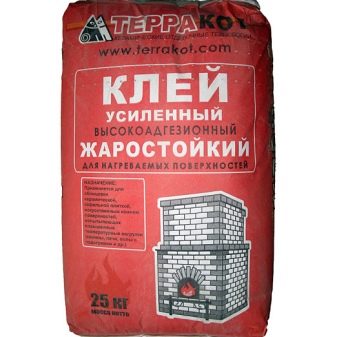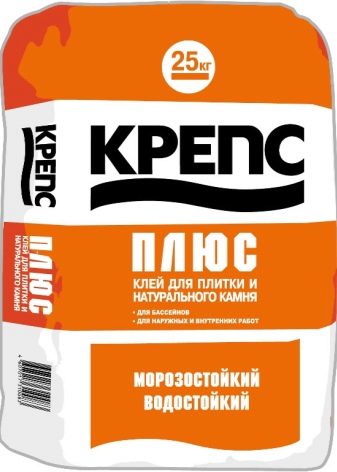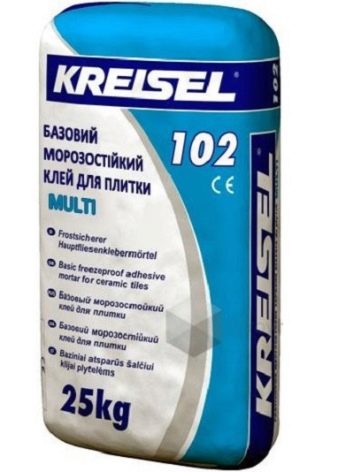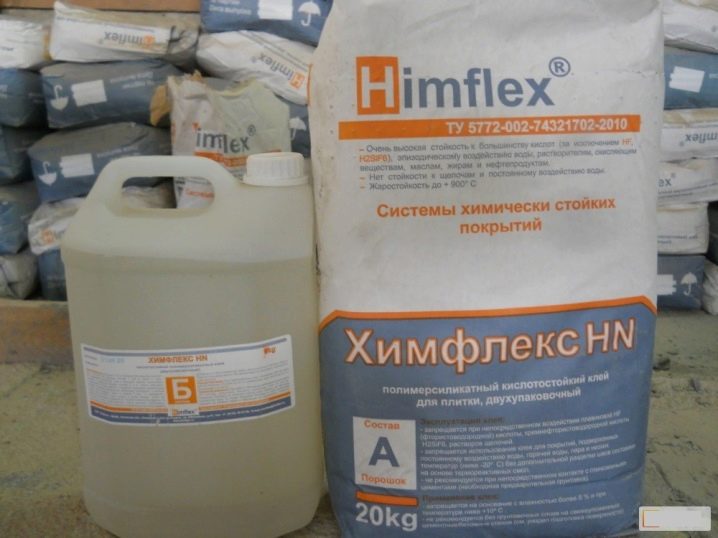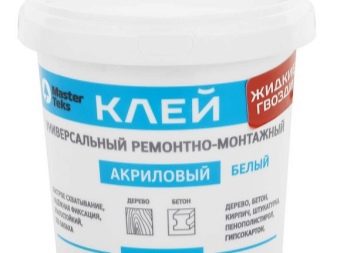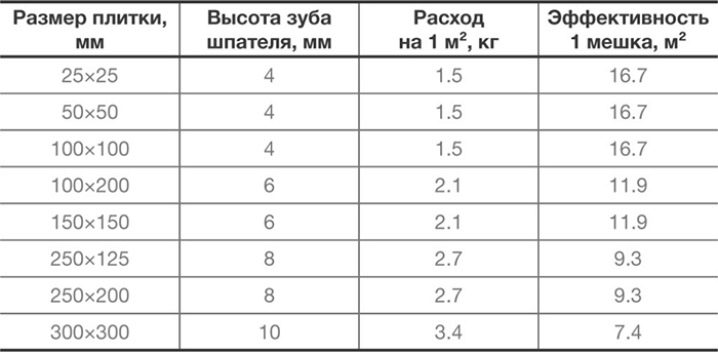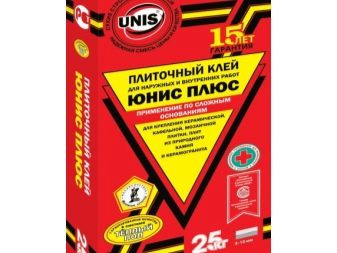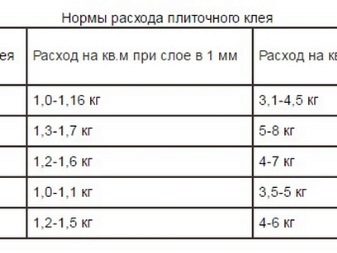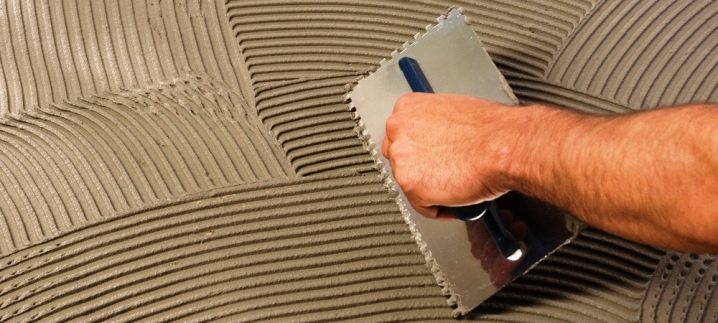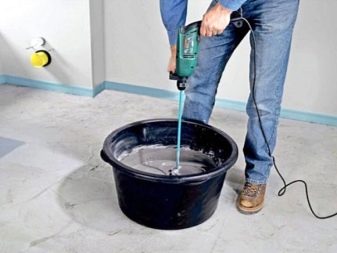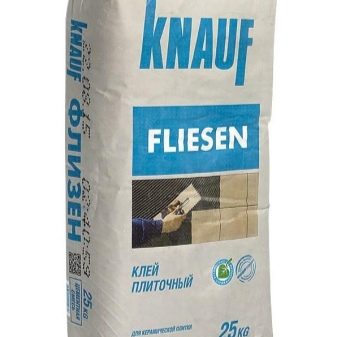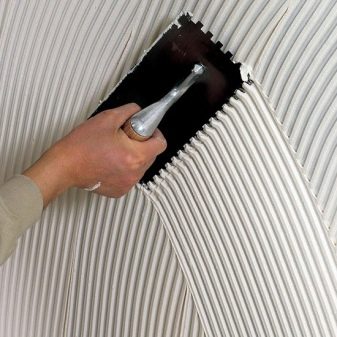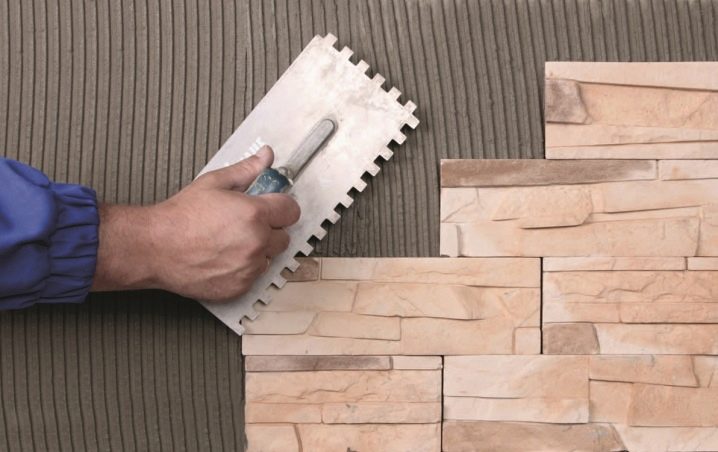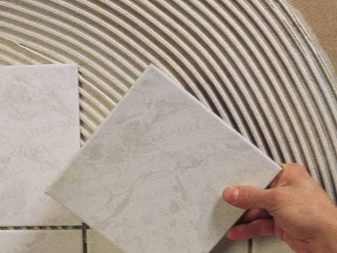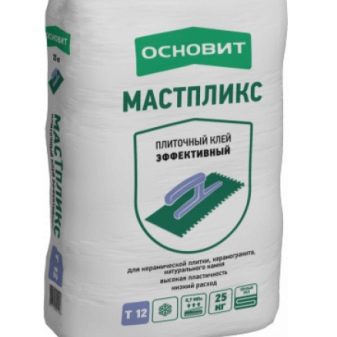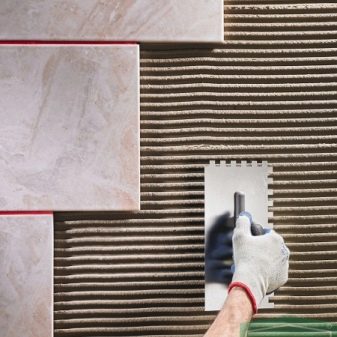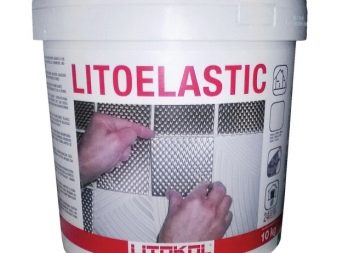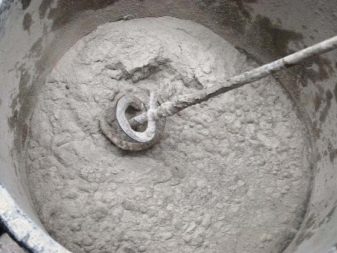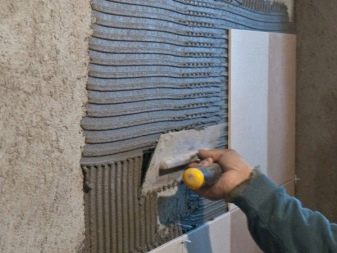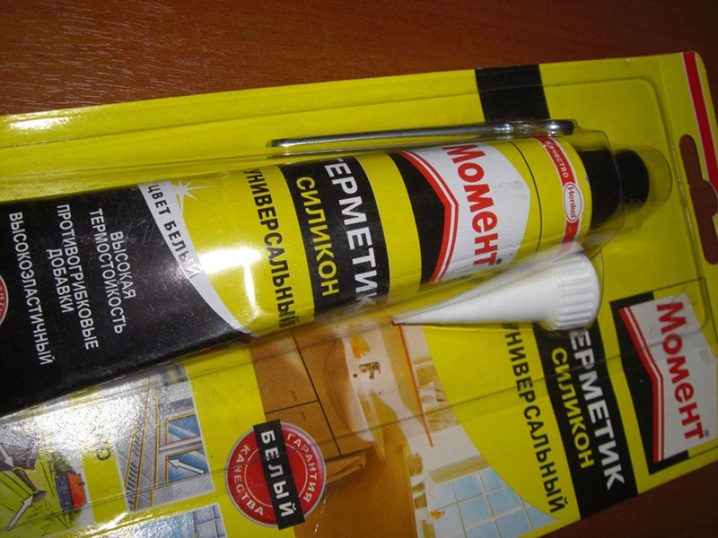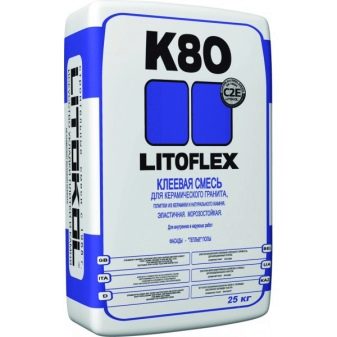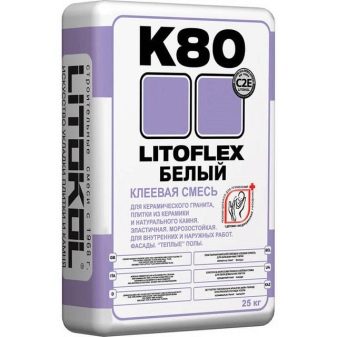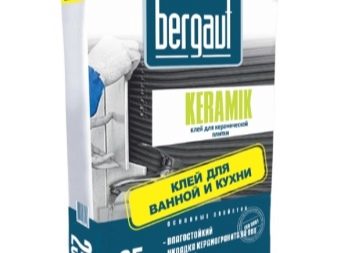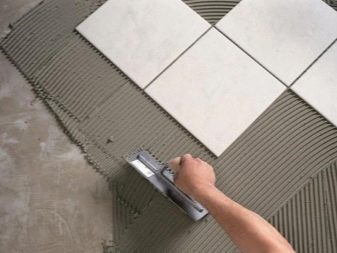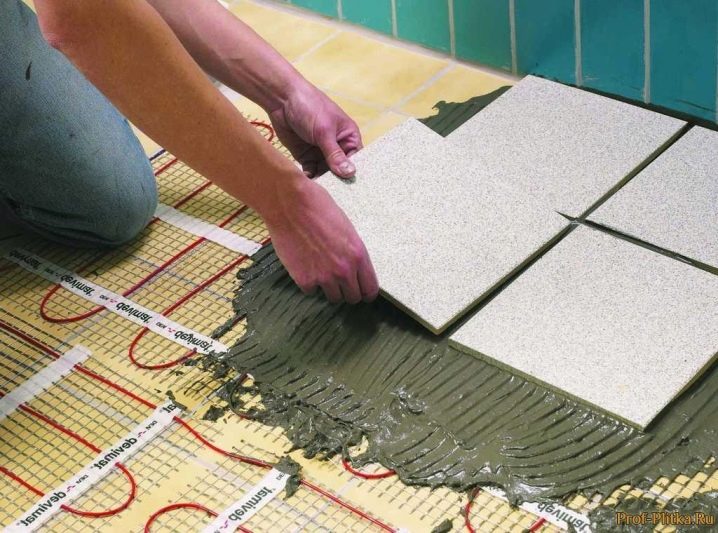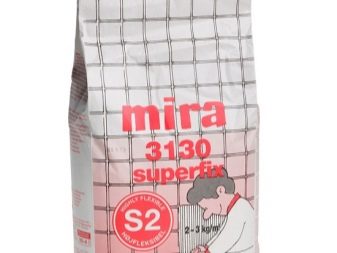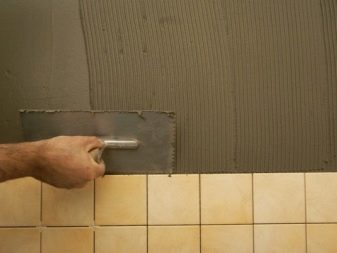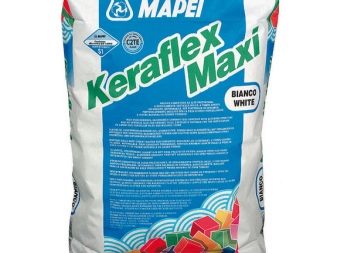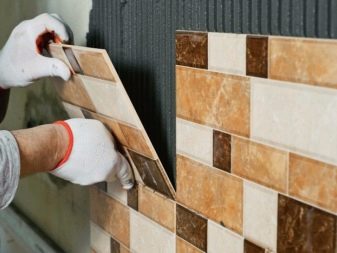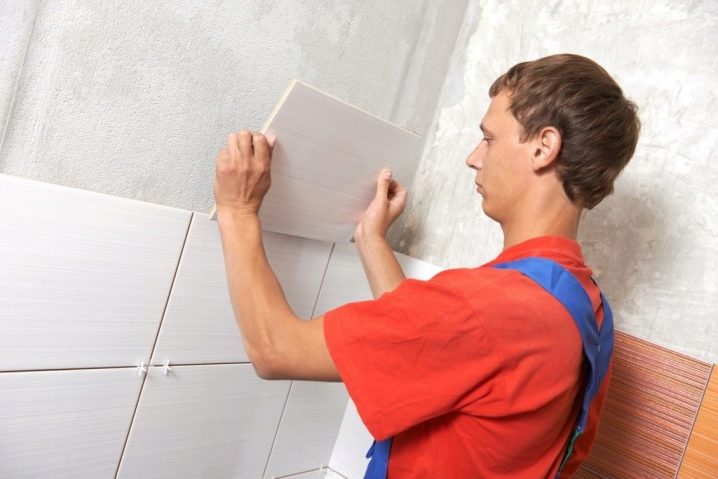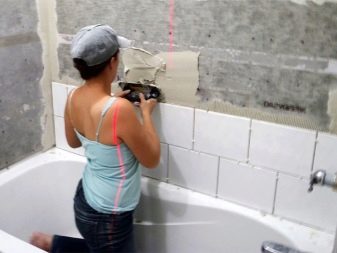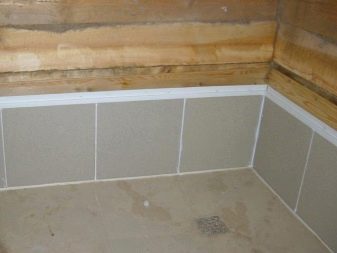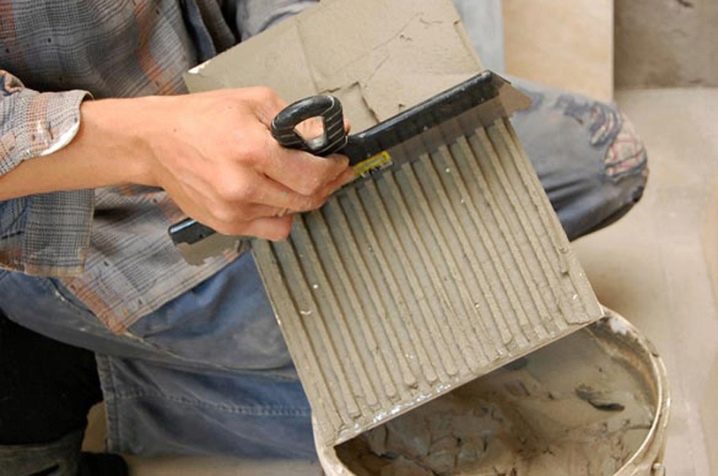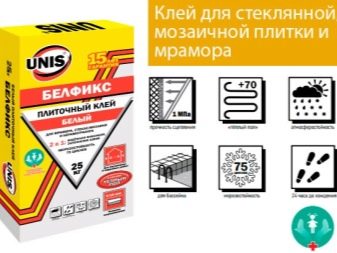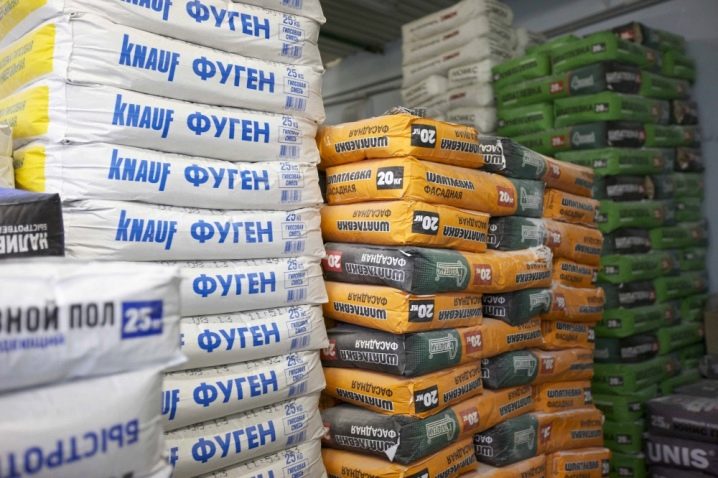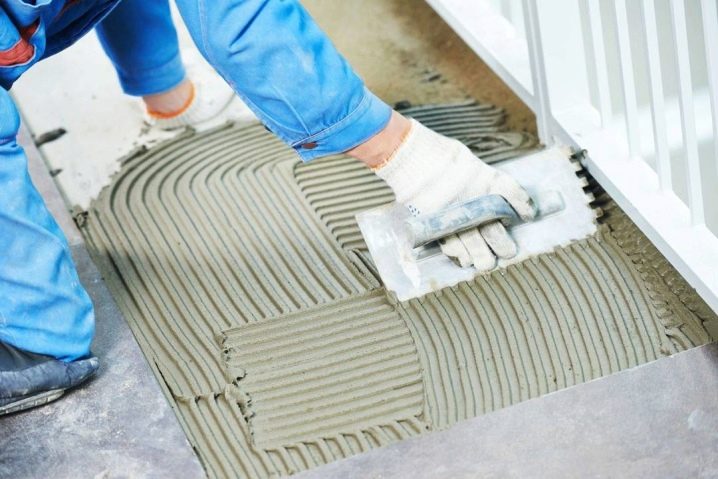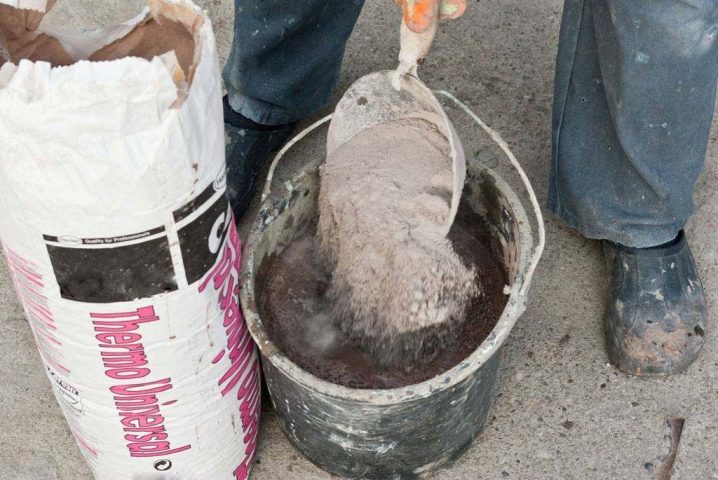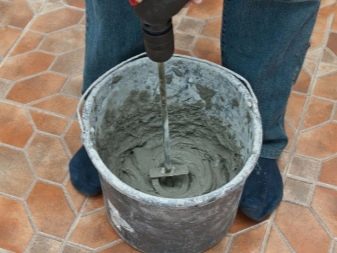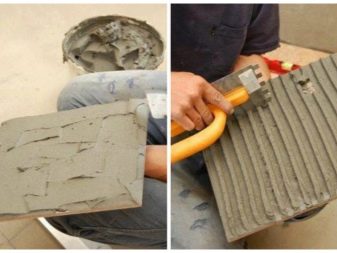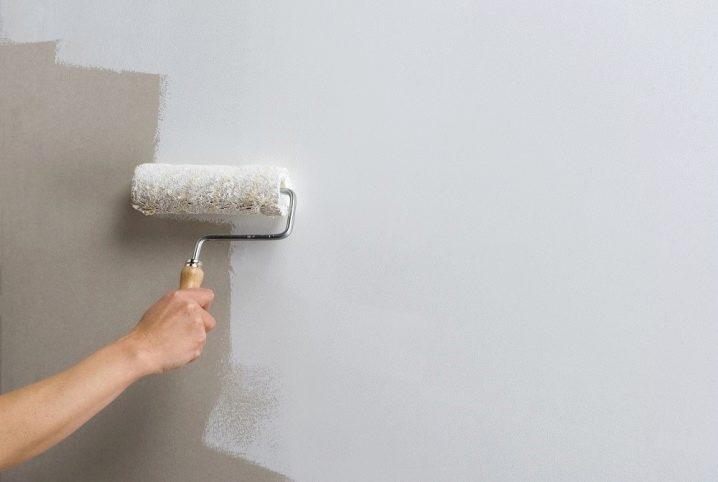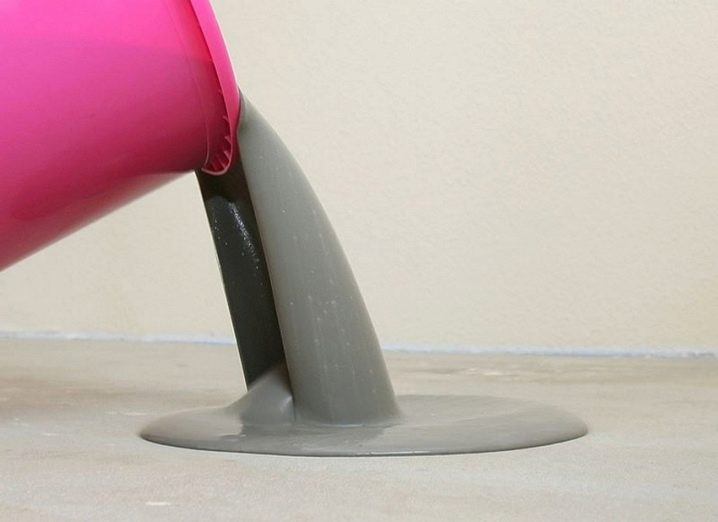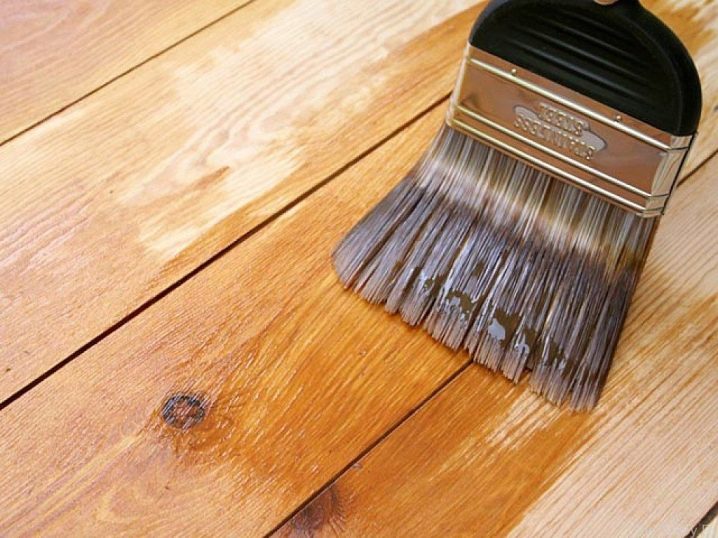How to choose tile adhesive?
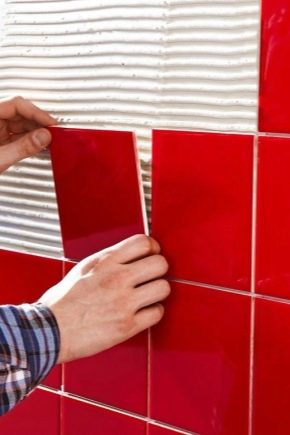
To choose the tile adhesive you need to familiarize yourself with the features of each type of product. The quality of the selected material depends on the result of facing work, so this issue should be taken seriously.
Features of the composition
The beauty of the tile, its even location on the surface of the wall depends largely on the glue. It contains cement, various modifiers with sand screenings. This is the basis on which an infinite number of variants of magic formulas are created, ensuring a strong adhesion of ceramics with a wall.
Glue provides high-quality connection with different types of tiles: ceramic, mosaic, rubber and other. He is able to keep for many years PVC or products from expanded polystyrene. There are solutions that do not require special surface preparation, but there are working in conjunction with the grid.
Some form a thick layer, while others are thin film.
To pave your way to the counter, and then to the repair site, without exception, all products of this type must have the following characteristics:
- high adhesion to hold different masses of the plate;
- high level of spreadability - this quality allows you to fill all the voids on the wall;
- high ductility - to evenly distributed over the surface;
- resistance to freezing temperatures;
- reduced hydrophobicity - so that the moisture does not penetrate deep into the composition and does not reduce its strength;
- heat resistance;
- long service life;
- fast freezing.
When choosing a tile, it is necessary to pay attention to the description of the product, because the choice of fastening material must match or correspond to its properties. In addition to glue, a sand concrete screed is used to secure the tile to the surface.. But it does not provide a reliable laying, the tile slips during the attachment, requires a long preparation of the surface and its life is not so long.
The advantage of adhesive solutions in a small amount of material during installation: even the minimum layer ensures reliable adhesion of materials. The variety of compositions is wide, you can choose a product for any surface. It is easy to use, but it requires certain skills and skill of the tiler due to quick drying.
Types and characteristics
Adhesives are divided into three positions:
- cement based substances;
- dispersion compositions;
- epoxy mixtures.
By international standards, this product is divided into five large categories.
Adhesive solutions for interior decoration. This type of material is considered the cheapest. The mixture is used for interior decoration of domestic character. In the composition there is a small amount of additives, but they do well with the tasks, providing a tight grip of the tile with the base.High-quality masonry is guaranteed only with standard tile sizes 20x30.
If there are no temperature fluctuations and adverse effects from the surrounding atmosphere, this adhesive is characterized by a long service life;
Adhesives with a high degree of fixation. They are able to withstand increased loads. Due to its qualities, such glue is used for work with a base that is subjected to temperature extremes and dynamic effects.
As a rule, the compositions are purchased for laying large-sized tiles or natural stones. The material can be used for laying on the old cladding.
Standard Adhesives. The second name of the material is universal glue. This is the most common tool that is in high demand among handlers. The mixture is used for internal or external works. Although this glue is called universal, it is not recommended to acquire it for work with tiles that are larger than 30x30. Also, do not apply the solution in rooms with high humidity and high loads on the floor.
Mixture for floor tiles. The composition of such a material contains plasticizers, thanks to which the material fills all the existing voids. Since the glue has a liquid consistency, it is not suitable for interacting with walls.
Waterproof glue. This composition was developed specifically for finishing work in pools and fountains. It is often acquired by the owners of apartments and country houses for the decoration of bathrooms, open terraces. The composition of the mixture is identical to the adhesive with increased fixation, but it also contains modifiers.
Waterproofing adhesive has the following properties:
- the repulsion of moisture;
- harmlessness;
- resistance to chlorine;
- increased adhesion, which does not decrease after some time.
Dry mixes
Cement is used as the basis for dry mixes. The key advantage of this material is the possibility of its use on uneven walls, on which there are various differences in curvature. The adhesive is capable of leveling the base layer.
Cement adhesive for tile is classified as dry mortar. A key component of the composition is cement, whose share in the mixture reaches 90%.The remaining part falls on sand with modifying additives, so this glue is considered versatile and inexpensive.
Cement mixtures are easy to operate. You only need to dilute the mixture with water, in a ratio of 3: 1. Many stackers use such mixtures to level the surface.
When working, keep in mind that they are able to correct only minor defects of the base.
If you choose glue for working with mosaic, pay attention to the color of products. For such work, you should buy a mixture of white.
Bicomponent
Two-component blends are considered durable adhesive materials. They can be operated when carrying out external and internal works on horizontal and vertical surfaces. Polyurethane two-component adhesives are popular, with which you can fix ceramic, earthenware, metal, wooden products. As well as concrete, PVC tiles, polystyrene and absorbent substrates.
After hardening, the glue turns into a moisture-resistant and frost-resistant coating., which can be used in the installation of "warm floors".The material is characterized by high strength, resistance to mechanical stress, vibration and chemical attack. High drying rates are also among the advantages of a two-component adhesive.
Mixtures should be properly used. The procedure for laying the floor tile is as follows:
- First you need to open the glue.
- Then the hardener is added to the resin, after which the components are thoroughly mixed. Use for these purposes a construction mixer, whose speed is 400-800 revolutions.
- It is necessary to mix for two minutes, then there should be a break - 1-2 minutes.
- Then you need to mix the solution again. Its useful life is limited to drying time. Laying cover is made within 40 minutes.
- When working with this glue, use a notched trowel. The layer should not exceed 2 mm. It is necessary to firmly press the tile to the surface and lay with the help of tapping. Rolling tiles is carried out using a pressure roller, which allows you to completely remove the air from under the plate.
- After three hours, you can begin to grout and seal joints.
- You can walk on the surface in 3-8 hours.
Glues belong to the category of two-component solutions. The basis of this material is epoxy resin, supplemented with hardeners, solvents, fillers and plasticizers. It is necessary to strictly observe the proportions of mixing with water specified in the instructions.: Dosage violation can make the mixture dangerous.
Glue differs in elasticity, does not shrink, does not appear through through porous products.
The mixture is realized in finished form, has great adhesion and can be used on any type of base.
Suitable for laying on surfaces that are not ideal for smoothness: plasterboard, PVC, floating type cement screeds, various types of metals, concrete and plaster. Used for mounting tile to tile.
Temperature range withstand - from - 40 to + 100 degrees Celsius. The manufacturer calls his product waterproof, so it can be purchased for swimming pools, laundries and bathrooms.
Ready made
The finished formulations have a paste form. The consistency gives the product dignity, which is to save time on mixing the mixture, the absence of dust particles and the invariance of the composition. The minimum time period during which it is necessary to use glue is 40 minutes.that allows you to perform maneuvers during facing works. Organic viscous additives, mineral components and other special substances are added to the material.
Dispersion formulations are designed to work with keramoplitka, mosaic, clinker products, glazed material and natural stones. Can not be used on lacquered MDF and DVF. When choosing such mixtures, keep in mind that they are intended only for interior lining.
Manufacturers offer a variety of options designed for specific conditions of use, but there are five main types that you need to be familiar with before you buy.
Quick dry
Similar formulations provide drying and full use of the floor after 3-5 hours after laying material. They are suitable for laying porcelain stoneware and stone tiles. The material forms high-quality adhesion on mineral, undeformed substrates.
Many masters recommend using for cladding bathrooms, as such compositions are water resistant.This type of mixture allows styling at low temperatures in an unheated room. Sale is carried out only with a dry form.
Heat resistant
These compositions can be used at temperatures up to +100 degrees. To use such a solution in the bathroom is a waste of money. In most cases heat-resistant glue purchased for laying tiles on fireplaces and stoves.
With this product it is possible to glue only ceramic refractory tiles.
Use with the warmed, concrete bases, and also in work with artificial stones is not allowed. Heat-resistant mixtures do well with fixing tiles on the surface of aerated concrete and bricks. Sale is carried out in a dry form.
Cold resistant
These mixtures are sold in a dry form. They are designed for fixing ceramic tiles. Such glue can be exploited for interior work in rooms with high humidity, for work on concrete and cement screed.
If you work at room temperature, the operation should last no more than 2.5 hours.
Acid resistant
Acid-resistant adhesive mixtures are classified as two-component.Such material is designed to work with acid-resistant tiles, which is placed in rooms with temperature changes and contact with external chemical irritants.
The advantage is the quality of fixing tiles on a wet surface. The mixture quickly hardens, does not have an unpleasant odor and does not contain toxic substances.
Acrylic adhesive
This type of products is in wide demand among professional craftsmen and amateurs. The substance has advantages over other compositions due to its elasticity, can be used for tiles with different characteristics.
If you want to glue the tiles on the OSB slab, acrylic glue is best suited for this purpose. Not every material is able to cope with a similar task, since the OSB board is made of wood, which has poor adhesion with many cement mixtures.
In order for acrylic glue to attach quality products, you will need to securely fasten the slab so that it does not bend or vibrate. Otherwise, you will encounter a situation where ceramic tiles fall off the ground.
Consumption
The issue of tile adhesive per square meter is always the key. Each person must correctly calculate the required amount of material in order to plan their expenses and not spend money on surplus.
Each material absorbs glue in its own way, this property depends on the porosity of the products. Ceramic tile absorbs the smallest amount of glue, and cotto tile increases glue consumption during installation.
Also, the dimensions, the type of surface and the method of installation influence the expenditure part.
The trademark and composition also influence. Since each brand uses its own type of additives in different quantities, products have a different consistency, the consumption of each glue will be different. For example, if you use "Eunice", you will need 1 kg per square meter. Litokol consumption reaches 1.3 kg.
Laying specialists have already calculated the consumption of the popular ceresit glue. When working with tiles 30x30, you need 4.2 kg per square meter. These figures are relevant if you are working with a spatula, whose teeth are 10 mm. Masters recommend purchasing only proven products that are popular.
Also, the required amount of adhesive is influenced by temperature. The higher the rate, the faster the moisture evaporates from the solution, which leads to increased consumption. Do not forget about the experience of the master. Professional handlers use only the right amount of glue, unlike beginners who can consume more products than they need.
Estimated costing of cement-based adhesive mixture
Under positive masonry conditions, you will need 1.3 kg. This indicator should be multiplied by the thickness of the layer that is superimposed on the base. If you use tiles with traditional parameters, the layer thickness will be 4 mm.
Multiplying 1.3 by 4, you get the value of 5.2 kg. This amount of glue you need to work on one square meter. When working in a room whose area is 10 square meters, you will need 52 kg of adhesive mixture.
Consider tile dimensions in your calculations.. Depending on these indicators will vary the thickness of the layer.
Manufacturers Rating
In choosing the best tile adhesive, a special review of products from popular manufacturers will help you.
Knauf fliesen
This product has proven itself in working with complex surfaces. The cost of a bag of 25 kg is about 250 rubles. Glue is considered the best universal option.
It can be used for laying wall or floor tiles, regardless of the type of base.
Product advantages:
- slow rate of hardening - allows adjustment and cleaning of seams;
- savings in use - can be applied under the tile with a layer of 7 mm, which guarantees high-quality fixing;
- elastic properties - is necessary when working with difficult and hard-to-reach places;
- affordable price.
Eunice 2000
The brand is almost on par with Knauf. The product is considered the best tile adhesive in terms of adhesion power. The price is about 250 rubles per 25 kg.
Advantages of the mixture:
- adjustment within 10 minutes - this time is enough to correct the defects;
- universal composition of the product - the composition showed itself well even in the multi-temperature mode;
- high elasticity - allow you to better cope with the temperature deformations;
- ease of use;
- consumption 3.5 - 5 kg per square meter.
"Found Musclepick - 12"
Glue is considered the best option for those who plan to lay tiles on an uneven base. The cost of the product is about 250 rubles per 25 kg.
Clay differs from other brands in the following qualities:
- tile laying can be carried out together with assembly leveling;
- the mixture is characterized by excellent adhesion properties, due to which you will be able to work with porcelain stoneware or with standard tile;
- laying can be carried out even from top to bottom.
Litokol
These adhesive mixtures are produced in Russia and are in demand by many buyers. The company offers cement-based, dispersion and two-component solutions.
The most popular product is Litokol K-80. It has the following advantages:
- high adhesion and plasticity;
- long term viability - indicators exceed seven hours;
- low consumption - no more than 1.5 kg with a layer thickness of 2 mm.
Among the disadvantages are the following:
- small interval for adjustment - the maximum time is 10 minutes;
- low frost resistance - withstands only 30 freezing cycles.
Litoastic
Glue is in demand, which is sold in buckets of 10 kg. The product is an elastic adhesive composition, which is suitable for external and internal works, as well as for creating waterproofing in rooms with a high level of humidity.
You can get a finished epoxy mixture by mixing the two ingredients according to the instructions for use.
Ceresit CM-11
Glue is considered universal. It is used when laying ceramic tiles. The cost of the product is about 265 rubles per 25 kg. The product has drawbacks that lie in the low performance of the glue, so it can not be used to work with every type of tile.
This tool is best suited for masonry on uneven grounds. It is characterized by a high level of adhesion, which exceeds 1.0 MPa.
Ivsil mosaik
The manufacturer offers a moisture resistant quality product. The cost of the mixture is about 480 rubles per 25 kg. Glue of white color, possesses high adhesive properties which exceed 1,0 Mpa. It can be used for laying tiles in swimming pools, baths and showers. Glue is considered to be professional and is used to work with any surfaces of tile origin.
"Moment" Silicone Sealant
Among the elements of this product are antiseptic components, due to which you can forget about the formation of mold. The product has high adhesive properties with respect to ceramic tiles. It is resistant to ultraviolet radiation, characterized by a pleasant aroma, which disappears after application. The cost of this glue varies within 250 rubles.
Litoflex K80
The mixture belongs to the category of professional. The cost of production is about 530 rubles for 25 kg. Designed to work with porcelain stoneware under different installation conditions. Means allows to provide a laying on old surfaces, a heat-insulated floor, it is used when facing facades and socles. Also, the mixture can be used for ordinary tiles. The product is economical consumption.
Bergauf keramik
The adhesive mixture is characterized by high elasticity, making it easy to use. The product can be used for external and internal work. It does not lose its qualities at temperature drops and provides high-quality grip.
It is resistant to moisture, so it is often purchased to work in the bathroom, garage and balconies.
Prompt drying saves time.
Among the advantages of the wizard are the following qualities:
- elasticity;
- ease of use;
- resistance to high loads;
- lightly stir the mixture;
- good work result;
- The product can be applied on heated floors.
Mira 3130 Superfix
The manufacturer offers moisture resistant adhesive mixtures. The cost of production is about 650 rubles per 25 kg. Material can be used during the works in damp conditions, when laying "capricious" products.
Among the benefits are:
- elastic properties;
- water resistant;
- high rates of frost resistance.
Keraflex maxi
"Keraflex" is considered the most worthy material for laying large-sized tiles. The product is characterized by high adhesion, plasticity and easy use. When working with this material you do not need to level the base.
How to choose?
When choosing glue for tile, it is necessary to take into account the peculiarities of laying and the type of material used. To purchase the best option, you need to study the composition of the product and manufacturer's recommendations.
When choosing tile glue should be taken into account the following skills wizard:
- work speed;
- experience in this direction.
You also need to decide on the following indicators:
- glue operating conditions - temperature variations, room humidity, the need for antiseptic and antifungal additives affect the choice;
- purpose of glue on the surface - there are universal mixtures, solutions for vertical or horizontal installation;
- possibility of use on a certain basis - there are options that provide high-quality grip on a rubber, ceramic surface. Some manufacturers offer glue for woodwork or fastening on plywood;
- time to adjust styling;
- type of mixture - dry or ready-made versions are available;
- production efficiency;
- the allowed layer - some types of the gluing mix do not allow leveling of a tile without preliminary alignment of the basis.
If you apply glue with layers of different thickness, it is better to foresee this quality in advance.
- universality in use - can be applied on the base or on the tile;
- adhesion rates;
- laying a certain type of tile.
Each manufacturer encloses a guide to their products.which describes the use of the product. Detailed technical properties are always present on the product packaging.
All adhesive mixes for working with tiles fall into two categories:
- specialized formulations;
- universal products.
Many buyers think that it is best to purchase a universal mix and not waste time studying packaging. However, experts advise to approach the issue of choice with all the responsibility, since universal formulations are not able to provide the maximum result in working with certain materials. Also, the life of the universal glue is less compared to specialized blends.
Glue must be purchased according to its purpose:
- moisture resistant with antiseptic mixtures should be used in rooms with high levels of humidity;
- heat resistant glue is intended for laying heating surfaces;
- cold resistant Options should be purchased for work on an open balcony or in a loggia without heating;
- universal Mixes are optimal for dry rooms, when working with wall or floor surfaces.
How to breed?
To get a quality adhesive solution, you need to dilute the mixture with small portions. This method allows you to work without haste and to lay tiles with high quality. Although the proportions are indicated on the package, you do not need to blindly follow the written instructions..
First you need to take 2/3 of water and mix it with a full portion of the dry mixture. Then, it is necessary to gradually add the remaining water until the solution obtains the required state of consistency. If required, add more liquid.
Hand glue is difficult to mix, so use a construction mixer. Mass density is checked with a spatula. The consistency should acquire sufficient elasticity without lumps and spreads. Leave the mixture for 20 minutes so that all the ingredients are completely swollen and turned into a single-born mass.
Do not leave the resulting solution for a long time, as it dries quickly.
Useful tips for use
Properly glue the tiles to the base will help you tips from the masters. With the help of the described recommendations, you will quickly cope with the tasks and will be able to avoid possible errors during installation.The work should take into account the state of the base and environmental conditions.
To ensure that the ceramic coating is firmly attached to the surface, it is necessary to carefully inspect the base before working. If necessary, prepare the surface.
Recommendations for the use of tile glue:
- It is not necessary to carry out laying in a cold season. Postpone your event until the thermometer rises above 5 degrees. This temperature is considered to be the minimum for high-quality hardening of cement glue;
- In hot weather, work is also not worth it. Stacking in the temperature range from 5 to 35 degrees. In extreme cases, the temperature of the base can be lowered by wetting the floor and tile with water;
- When installed in direct sunlight or in windy weather, the quality of work may decrease. If it is not possible to transfer the laying time, moisten the base with water or use a primer for this purpose;
- If you are planning to lay on new surfaces, make sure that the base is strong. When gluing tiles to concrete or plaster, wait until the coating dries.Thoroughly clean the substrate of foreign objects and oils that prevent adhesion. Irregularities need to be fixed with the help of repair solutions;
- When working on an old surface, test it for strength. For this purpose, you can use a regular hammer or nails. Shedding areas should be repaired to a firm foundation, and cracks and chipping should be strengthened using repair mortar. Uneven surfaces and distortions on a horizontal base can be corrected with leveling mixes;
- To ensure high-quality adhesion of the painted surface with ceramic tiles, sand the surface or create small notches;
- Working on absorbing surfaces, which include - chipboard, gypsum panels, gypsum blocks and aerated concrete, you should work to eliminate the absorption of the base;
Primers are used for this purpose.
- When working with wood, you will need a primer. To extend the life of the coating, glue using the net.
These recommendations will help you to secure the tile on any basis and to reduce the time at work.
Comparison of tile adhesive from different manufacturers, see the following video.
